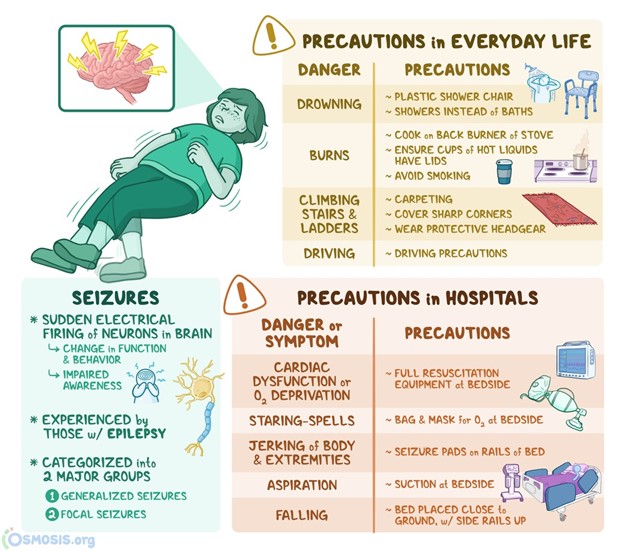A nurse is caring for a client in the medical-surgical unit.
Which of the following actions should the nurse take to decrease the risks for urinary tract infection for this client?
Select all that apply.
Review the need for the indwelling urinary catheter daily.
Place the drainage bag on the bed when transporting the client.
Use soap and water to provide perineal care.
Encourage the client to drink 3000 mL of fluid daily.
Change the indwelling urinary catheter tubing every 3 days.
Empty the drainage bag when it is half-full.
Correct Answer : A,C
A: Review the need for the indwelling urinary catheter daily.
This is correct because indwelling catheters should be removed as soon as possible to reduce the risk of urinary tract infection (UTI).
B: Place the drainage bag on the bed when transporting the client.
This is incorrect because the drainage bag should be kept below the level of the bladder and should not touch the floor to prevent the backflow of urine and contamination of the catheter.
C: Use soap and water to provide perineal care.
This is correct because soap and water can help to remove bacteria and debris from the meatus and prevent infection.
D: Encourage the client to drink 3000 mL of fluid daily.
This is incorrect because the client has a fluid restriction of 1000 mL daily due to heart failure. Excessive fluid intake can worsen the client’s condition and increase the workload of the heart.
E: Change the indwelling urinary catheter tubing every 3 days.
This is incorrect because changing the catheter tubing can increase the risk of infection by breaking the closed drainage system. The catheter tubing should only be changed when it is visibly soiled or malfunctioning.
F: Empty the drainage bag when it is half full.
This is incorrect because the drainage bag should be emptied at least every 8 hours or when it is one-third full to prevent back pressure and infection.
Nursing Test Bank
Naxlex Comprehensive Predictor Exams
Related Questions
Correct Answer is B
Explanation
Choice A reason:
Completing an incident report is not the correct action. An incident report should be completed as part of the hospital's protocol to document the medication error and ensure appropriate follow-up and investigation.
Choice B reason:
Checking the client for indications of bleeding is the correct action to be taken. In this situation, the nurse's first priority should be to assess the client for indications of bleeding, as the client received a significantly higher dose of IV heparin than prescribed. Heparin is an anticoagulant medication used to prevent blood clots, and an overdose can increase the risk of bleeding.
After administering the wrong dose of medication, the nurse's immediate concern is the client's safety and well-being. Checking for signs of bleeding, such as petechiae, ecchymosis, hematomas, bleeding gums, melena (black, tarry stools), haematuria (blood in urine), or any other unusual bleeding, is crucial.
Choice C reason:
Monitor the client's aPTT levels: This is not the correct action to be taken. Monitoring the client's activated partial thromboplastin time (aPTT) levels is essential to assess the client's coagulation status and determine if the overdose of heparin has affected their clotting ability. The healthcare provider may adjust the heparin dosage based on the aPTT levels.
Choice D reason:
Notify the risk manager: This is not the correct action to be taken. The risk manager or appropriate supervisor should be informed about the medication error as soon as possible to initiate a thorough review of the incident and take necessary steps to prevent similar errors in the future.
Correct Answer is C
Explanation

Hyperthermia is a condition in which the body temperature is abnormally high, usually due to exposure to heat, infection, or certain medications.
Hyperthermia can cause neurological complications, such as seizures, confusion, or coma. Therefore, the nurse should initiate seizure precautions for an adolescent who has hyperthermia to prevent injury and protect the airway.
Choice A is wrong because covering the adolescent with a thermal blanket would increase the body temperature and worsen hyperthermia. The nurse should remove excess clothing and use cooling measures, such as fans, ice packs, or cool fluids.
Choice B is wrong because submerging the adolescent’s feet in ice water would cause vasoconstriction and shivering, which would reduce heat loss and increase heat production. The nurse should avoid using extreme cold or ice water to cool the body.
Choice D is wrong because administering oral acetaminophen would not be effective for hyperthermia caused by non-infectious factors, such as heat exposure or medications.
Acetaminophen lowers the body temperature by reducing the hypothalamic set point, which is not altered in hyperthermia. Additionally, oral medications may be difficult to swallow or absorb in a hyperthermic patient.
Normal body temperature ranges from 36.5°C to 37.5°C (97.7°F to 99.5°F). Hyperthermia is defined as a body temperature above 38.5°C (101.3°F).
Whether you are a student looking to ace your exams or a practicing nurse seeking to enhance your expertise , our nursing education contents will empower you with the confidence and competence to make a difference in the lives of patients and become a respected leader in the healthcare field.
Visit Naxlex, invest in your future and unlock endless possibilities with our unparalleled nursing education contents today
Report Wrong Answer on the Current Question
Do you disagree with the answer? If yes, what is your expected answer? Explain.
Kindly be descriptive with the issue you are facing.
